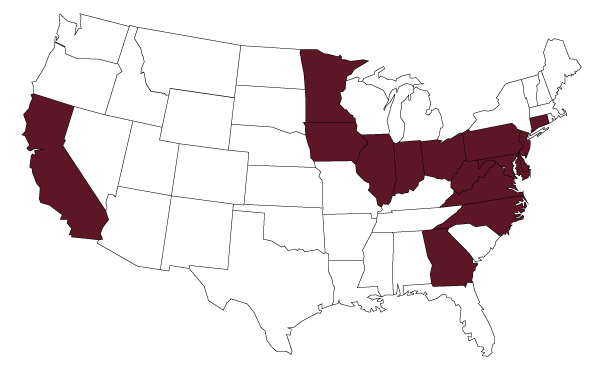In this article, we cover what ordinance or law coverage is, how it works, and the 4 major things ordinance includes.
A homeowner’s insurance policy only covers certain events in your home, like fires and floods, while others are not covered, like theft or vandalism. As a result, some homeowners find gaps in their coverage and realize they must purchase additional ordinances or law coverage to ensure adequate protection against these hazards.
While this policy can cost more than basic coverage, it could mean the difference between paying a large amount out of your pocket if you are the victim of an unexpected event. Talk to your insurance agent about what ordinance or law coverage will work best for you, and make sure you understand the policy before purchasing any additions!
What is an Ordinance or Law Coverage?
After a covered loss, your ordinance or law coverage will cover the costs of bringing your home up to the most recent building codes and ordinances. These policies can also help to provide additional protection if you are sued due to something that happened on your property. Most insurance companies offer ordinance or law coverage as an add-on policy for an additional premium.
Adjuster’s International Disaster Consulting estimates that the cost of a claim might increase by as much as 50% due to the need to comply with ordinances and rules following a disaster. For example, after Hurricane Sandy hit New York City in 2012, some homeowners paid tens of thousands of dollars to get their dwelling places back into compliance with local regulations.
Whether or not you purchase this type of coverage as an optional add-on, many homeowners would benefit from understanding how it works and what it covers.
How Does It Work?
If you’re a homeowner, you’re probably familiar with insurance. But you may not know that there is a specific type of coverage known as Ordinance or Law Coverage. As stated earlier, this coverage helps protect homeowners if their home is damaged or needs to be brought down or destroyed due to an ordinance or law in the state you live in.
One of the most important points to understand about Ordinances or Law coverage is that it’s optional and paid for by homeowners. It is not an obligation required by any governing authority like standard homeowner insurance, so you’re more likely to be protected if you opt in. However, many states require property owners to carry liability insurance covering damages caused by ordinance or law.
The major difference between the two coverage types is that Ordinance or Law Coverage offers protection against unforeseen circumstances such as new legislation. At the same time, Liability Insurance typically covers more predictable events such as injury on your property.
Additionally, some Law Coverage policies are designed to provide coverage only when the result of the law leads to destruction – like when natural disasters force evacuations from flood zones – while others also offer reimbursement for damage done to property from ordinances such as rent control measures. To choose the best policy for your lifestyle and budget, it is always best to consult with an agent who can help you look through the options available.
Is It Automatically Included In A Homeowner’s Policy?
Unlike liability coverage, which is included in a basic homeowner’s policy, ordinance and law coverage must be purchased separately as an endorsement. If you’re considering getting this type of coverage, it’s essential to know what your current insurance does not cover and how much it will cost.
Should I Buy It?
If you live in an older place that has not been updated in decades, a complete rebuild to meet the requirements of the latest local building codes could be very expensive. You would most likely need to move out and find another place to live while it’s being rebuilt. This type of renovation can range from $75,000 to $250,000, depending on what needs to be done and where your house is located.
If you live in a community that mandates the demolition of a home if more than half of it is damaged, this form of insurance may be worth considering. Demolition and reconstruction expenses are not included. You must also think about how much money you will lose by being unable to use your home during construction. Suppose the value of your property decreases because of work required by law, ordinance, or public regulation. In that case, ordinance coverage can reimburse you for any decrease below the assessed value at the time of purchase. The purpose is to help keep people in their homes and prevent them from becoming homeless after a disaster strikes.
What Does Ordinance or Law Coverage Cover?
Most companies offer ordinance that equals 10%, 25%, or 50%.
So, if, for instance, your home coverage is $400,000, and you choose 10% law insurance, you will get a $40,000 return. With it, you can pay for any required upgrades and demolition costs or receive this money for the undamaged portion of your dwelling place.
All the advanced homes now might ask you to upgrade anything, from plumbing and electrical wires to HVAC systems and roofing and fencing materials.
What Does Ordinance Not Cover?
The good thing is that the ordinance will help you if your home sees damage such as fire, windstorm, lightning, etc. because your standard homeowners policy should cover that, but it will pay the costs for upgrading your home to a code during the renovation.
Do Homeowners Need Ordinance?
Of course, homeowners have a choice when it comes to law coverage. And people with newer houses and apartments might not need to worry about this issue.
But, if you have an older house that did not have any renovations in the past few years, the ordinance might serve you well, especially if costs go up.
Just imagine the amount of money you would have to pay for a new air conditioning system or to renew your plumbing and electrical systems. The numbers would be huge, and law coverage ensures you do not pay these sums out of your pocket.
Another time when homeowners truly need ordinance is when they live in states that require them to demolish homes with more than 50% damage.
The standard home insurance policy will cover only the damaged parts of your house, and you will be left paying all other costs.
What If I Do Not Have Ordinance or Law Coverage?
If you do not have an ordinance or low coverage, you might be paying a lot of money if an accent happens (an accident that the standard insurance policy does not cover). In addition, if you do not have it, the coverage of the undamaged portion of the building, the demolition costs, and the increased construction cost – all these, you would have to pay yourself.
For example, if a fire destroyed your basement, you would have to pay for the repairs yourself because your policy will not help you modernize the electrical wiring.
How Much Ordinance or Law Coverage is Typically Provided
Ordinance or low coverage is usually included with about 10% of your dwelling’s coverage limit. However, some companies might offer a percentage of 25% or 50%.
Final words
Ordinance or Law coverage might be the guardian angel in times of disaster and in times when the standard insurance policies cannot save you. Investing in ordinance might seem unnecessary, but eventually, it can be a blessing in disguise.
Try our law coverage and make sure nothing can surprise neither you nor your dwelling space. Click here to schedule an appointment with our team, and we’ll help answer any questions you have and support you with ordinance or law coverage.
FAQs
What Does the Law Coverage Mean?
It means coverage for a loss. For example, in the case of a damaged building or repair, the law coverage will cover loss caused by the laws regulating construction and repair.
How Much Will Additional Ordinance Cost Me?
Additional ordinances or low coverage are not very expensive, but they might be precious. For example, if you want to upgrade the coverage from $10,000 to $100,000, it will change your annual premium by about $50.
How Much Will Ordinance Pay as Opposed to Standard Insurance?
Your standard policy will only pay for the damaged part of your building. On the other hand, law coverage will pay for any remaining part of your home that has to be rebuilt, although it is not damaged. Standard policies do not cover undamaged portions.
What Could Happen If I Do Not Have Ordinance?
Since standard policies do not pay the damage for rebuilding in total, you would have to pay money yourself if you do not have the additional ordinance or law coverage. Without it, your coverage will stop the repairs needed to repair the home to the previous state. Therefore, you will have to pay all the other costs for bringing the building up to code.



